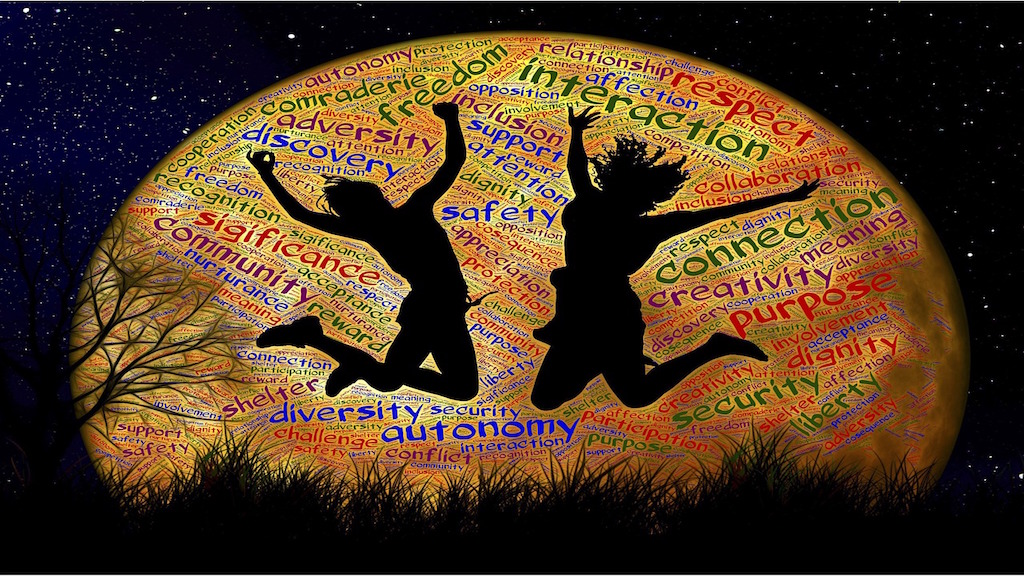They work with bottom-up plans instead of top-down targets.
By Alexander Vuylsteke and originally published on the Yools blog.
Although we spend most of our awake time at work, 66% of us are not engaged at work (Gallup). In other words, one third is happy at work and two thirds are counting down time. When people are counting down time, you can be sure they’re not using all of their energy and creativity to advance the organization. By making work attractive for everyone, both the organization and its members win.
At Yools, we want to create an organization that empowers people to be themselves while serving as a vehicle for personal growth and expression. Here are a few characteristics of our organization.
Purpose over profit
At Yools, we make decisions primarily based on our purpose. Profit is of secondary importance. We could quite easily trick our customers into buying things they don’t need. We don’t do it, because our purpose is to help our customers advance their local business and because we want to build a trusting relationship with them.
Seen from this perspective, we would be shooting in our own foot if we’d rip off our customers. This is why focusing on purpose matters: a meaningful purpose motivates us much more than a number with a euro sign in front.
Of course money and profit are still important. We need to breathe to live but we don’t live to breathe. Healthy financials boost our growth and impact.
Trust by default
Why would someone have to ask permission to buy a new screen? If she wants to buy one, it must be that she needs it. We don’t believe in creating control mechanisms for the 5% of people that abuse the system, while these control mechanisms make the work of the other, trustworthy 95% more difficult. Yet this is what happens in a lot of organizations. People are distrusted until proven otherwise.
We start from the opposite assumption that people are good and trustworthy, until proven otherwise. We don’t check on each other when working from home, we don’t ask for a doctor’s note in case of illness, we just buy what we need, we work when and where we want, …
As a result, everybody in the team makes an extra effort to prove that they deserve the trust that they receive unconditionally. If you treat people like children, they will behave like children. Treat them like adults and they will behave like adults.
Autonomy & responsibility
A hierarchy with managers in a permanent position of power does not encourage these managers to treat their subordinates as equal human beings. It’s just easier to say “just do this and this, and then report back to me”, although some great, empathic managers overcome this natural tendency. As a result, people start following orders and procedures. They stop thinking and they start feeling unvalued. This is quite dehumanizing, if you think about it. We’ve just gotten so used to it that we don’t notice anymore.
We replaced traditional hierarchy with another structure. We’re organized into two self-steering teams of about 8-10 people. Each team has its own financial bottom-line. Instead of a manager, they have a rotating coordinator that is replaced after 6-12 months. This coordinator doesn’t have more or less decision power than anyone else. It’s a serving role, not a steering role. Coaching instead of coercing. Hiring decisions by the team instead of the “boss”.
Bottom-up plans instead of top-down targets.
Some people infer from our philosophy that we make decisions through consensus but this is not the case. We use the input process (inspired by the advice process in Reinventing Organizations), which states that anyone can make any decision as long as input is asked from those impacted by the decision and from those with expertise on the matter. This is much more efficient than both consensus and top-down decision making.
It appears that when people are trusted to make decisions (big and small), they start thinking twice because they know they will have to bear the consequences of their decision.
One thing we learned is that the right coaching and guidance structures have to be in place, adapted to the individual. The coordinator plays a key role here.
As we’re seeing promising first results, we’re looking to expand our vision beyond our current team of 20 people. If you want join or work with us in any way, don’t hesitate to reach out.
Permission to republish granted by the author.
Featured Image/graphic link added by Enlivening Edge Magazine.




